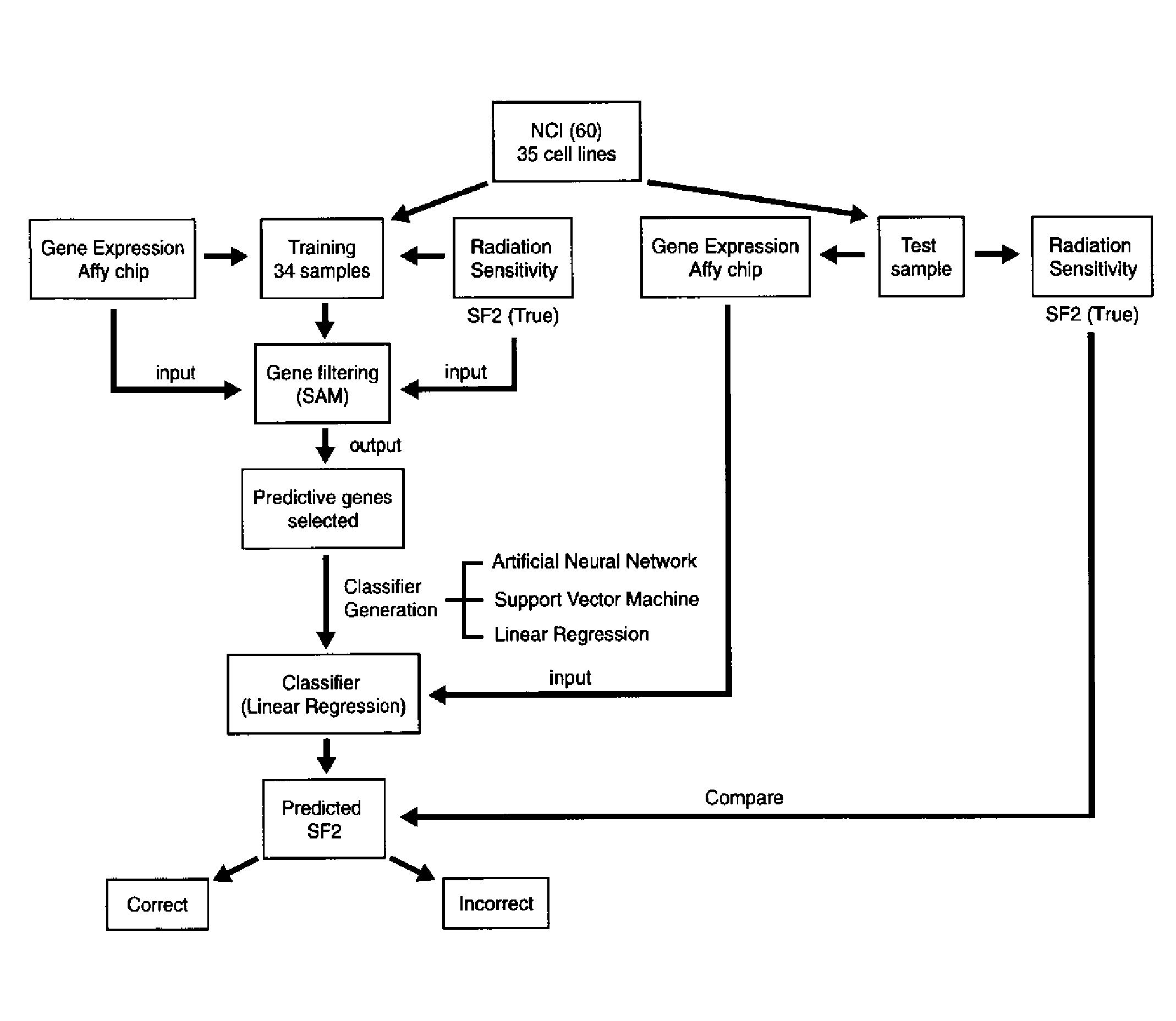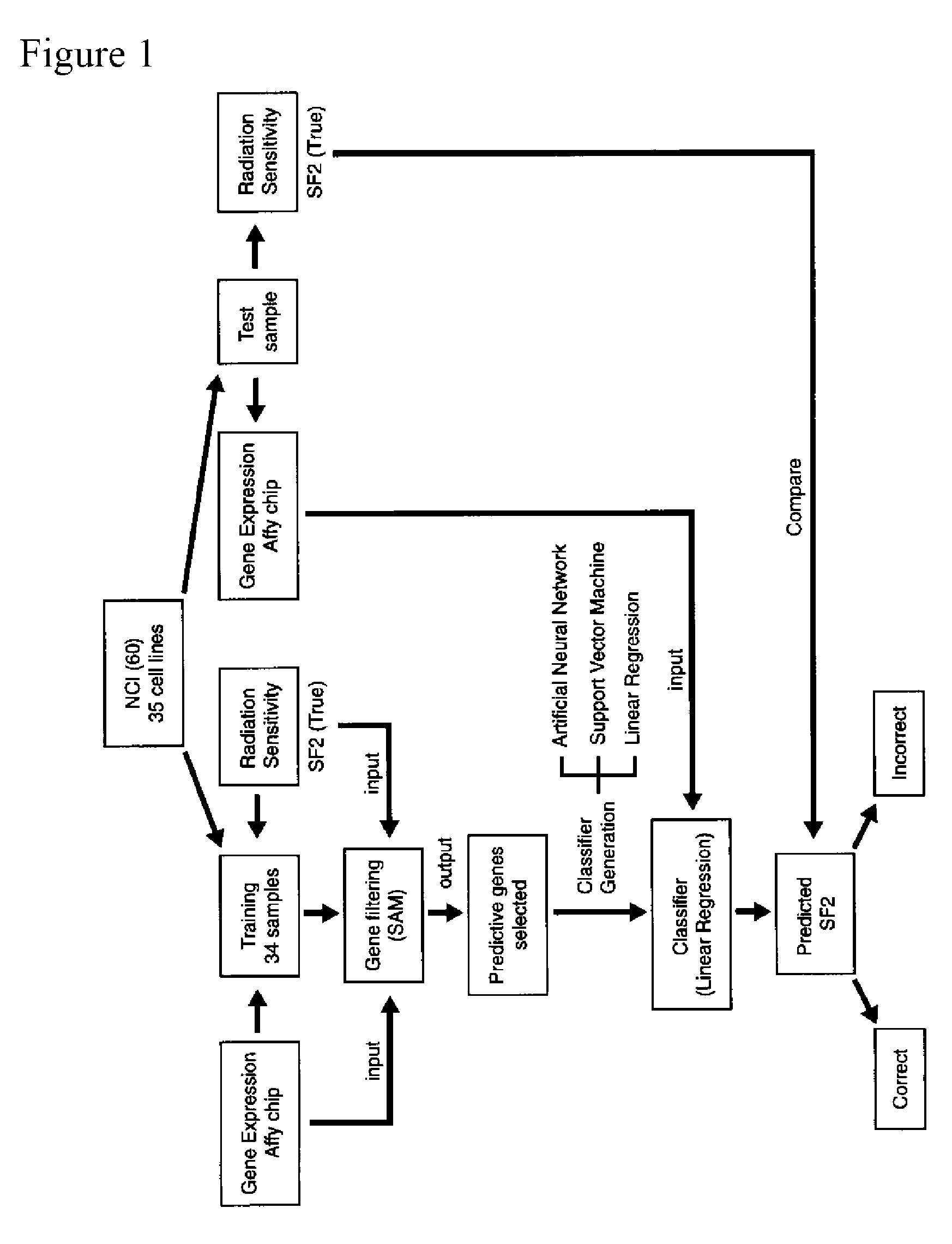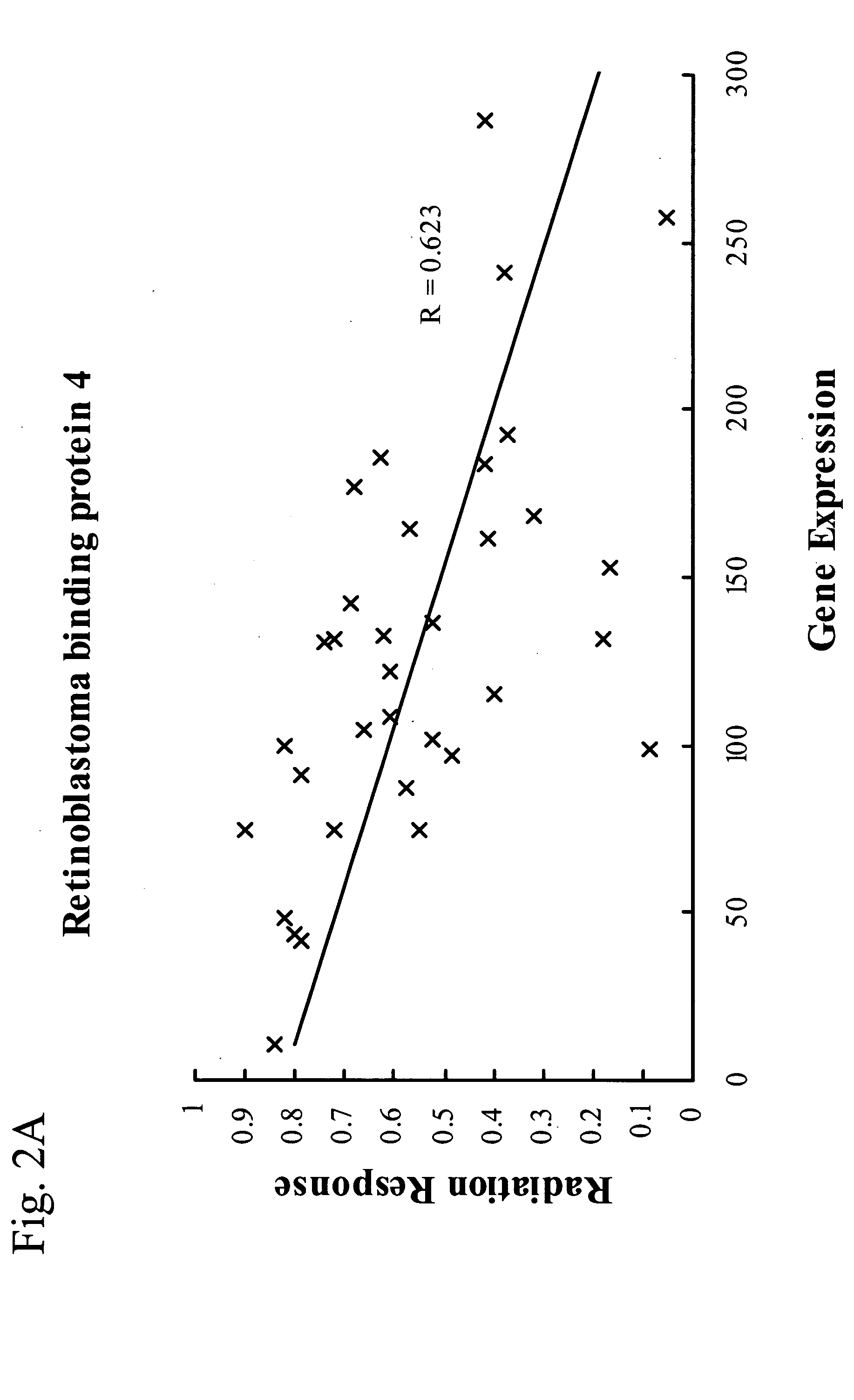Identification of Novel Targets for Radio Sensitization Using a Genomic-Based Radiation Sensitivity Classifier
a technology of radio sensitization and classifier, which is applied in the direction of instruments, material analysis using wave/particle radiation, organic chemistry, etc., can solve the problems of limited number of known potential targets, outnumbering the number of known targets, and hurdling to the development of better radiosensitizing drugs, etc., to increase the radiation sensitivity of human tumor cells, increase expression, and increase the effect of tumor cell radiation sensitivity
- Summary
- Abstract
- Description
- Claims
- Application Information
AI Technical Summary
Benefits of technology
Problems solved by technology
Method used
Image
Examples
example i
[0120] The invention includes a classifier to predict cellular radiation sensitivity based on gene expression profiles in thirty-five cell lines from the NCI panel of 60 cancer cell lines (NCI-60), using a novel approach to predictive gene analysis. The classifier predicts, within 10%, the survival fraction value after 2 Grays (SF2) for twenty-two of the thirty-five cell lines for a 62% predictive accuracy. A permutation analysis shows that the likelihood of predicting 22 SF2s out of 35 samples within 10% by chance alone was 1 in 5,000 (p=0.0002). Furthermore, analysis identified three novel genes, retinoblastoma binding protein 4 (RbAp48), G-protein signaling regulator 19 (RGS19) and ribose-5-phosphate isomerase A (R5PIA) whose expression values are strongly correlated with radiation sensitivity. Moreover, gene selection analysis by performing quantitative real-time PCR of the selected genes, confirms the target geneexpression level as determined by the microarray. Finally classifi...
example ii
[0126]FIG. 6 and 7 show the results of the classifier. The classifier predicted 22 / 35 (62%) of the cell lines SF2 values correctly. A median and mean absolute difference of 0.104 and 0.157 respectively between the true and predicted SF2s was calculated. Thirteen samples were incorrectly classified. Of these, 2 samples missed their cutoff by less that 5%. These include cell lines KM 12 (Predicted SF2=0.56, True SF2=0.42, Cutoff=0.52) and SF 539 (Predicted SF2=0.677, True SF2=0.82, Cutoff=0.72). All three leukemia cell lines in the list (HL60, CCRF-CEM and MOLT4) were incorrectly classified as well. However for two of them (HL60 and CCRF-CEM), the predicted SF2 was a negative number (−0.014 and −0.133 respectively). Therefore, the classifier judged these two cell lines to be in the radiosensitive side of the spectrum, which is indeed true. However this failed to meet the criteria as originally defined and thus they were classified as incorrect predictions.
[0127]FIG. 8 shows the list ...
example iii
[0129] Quantitative PCR validates the expression level of the three known genes selected by the analysis as predictive of radiation response. To validate the gene selection step, the inventors determined the expression level of the three known genes selected by the analysis using quantitative real-time PCR. To perform these experiments of validation, cell lines were selected for each candidate gene that were on opposing ends of the radiation sensitivity and gene expression spectrum. As shown in FIG. 3, there was excellent correlation between quantititative real-time PCR and microarrays for all three known genes selected by the analysis. A total of 26 cell lines were assayed (10 lines for RGS-19, 8 lines for RbAp48, 8 lines for Ribose 5 Phosphate Isomerase A). RT-PCR gene expression values for the gene of interest in 22 of the 26 cell lines fell within the expected range measured by the Affymetrix HU-6800 chip.
PUM
| Property | Measurement | Unit |
|---|---|---|
| cure rates | aaaaa | aaaaa |
| radiation resistance | aaaaa | aaaaa |
| resistance | aaaaa | aaaaa |
Abstract
Description
Claims
Application Information
 Login to View More
Login to View More - R&D
- Intellectual Property
- Life Sciences
- Materials
- Tech Scout
- Unparalleled Data Quality
- Higher Quality Content
- 60% Fewer Hallucinations
Browse by: Latest US Patents, China's latest patents, Technical Efficacy Thesaurus, Application Domain, Technology Topic, Popular Technical Reports.
© 2025 PatSnap. All rights reserved.Legal|Privacy policy|Modern Slavery Act Transparency Statement|Sitemap|About US| Contact US: help@patsnap.com



